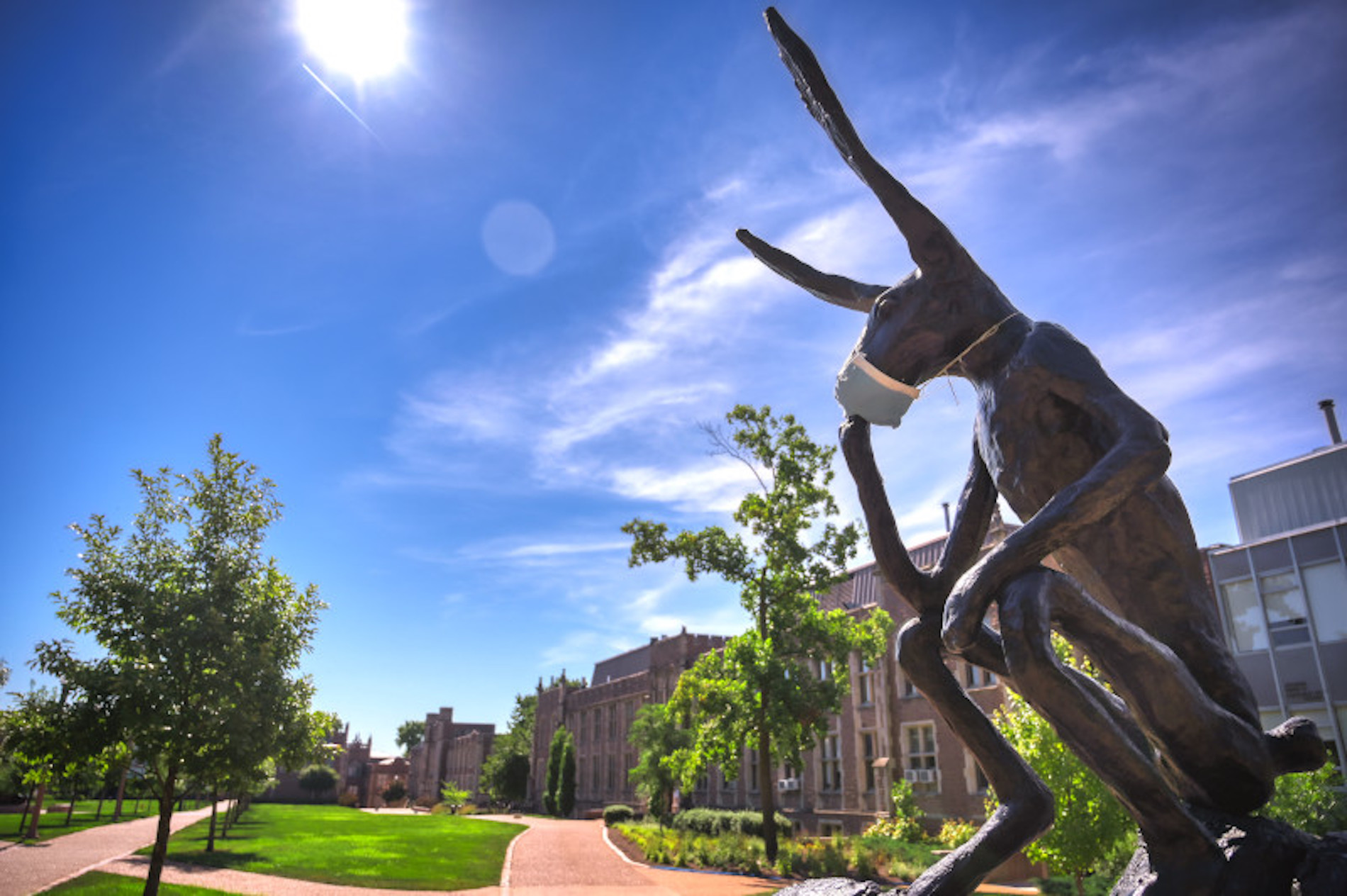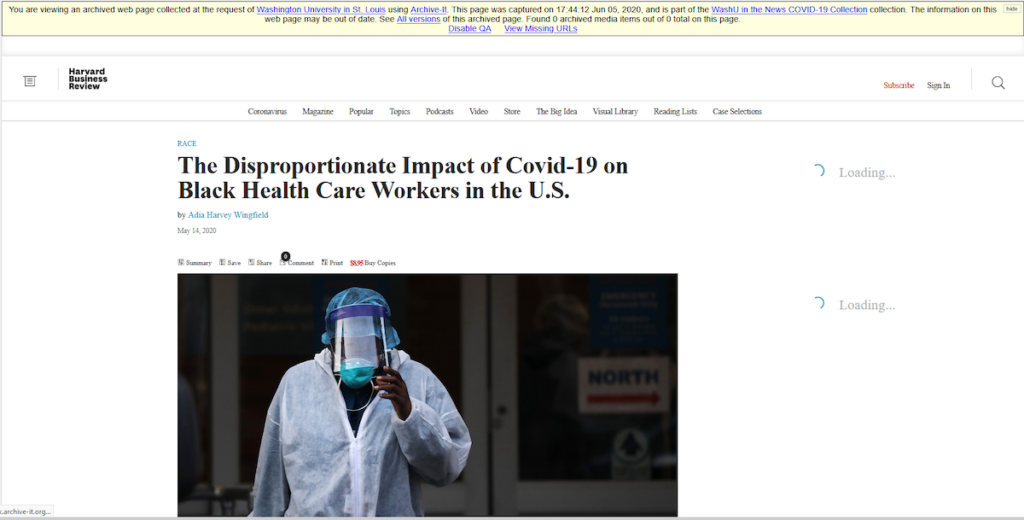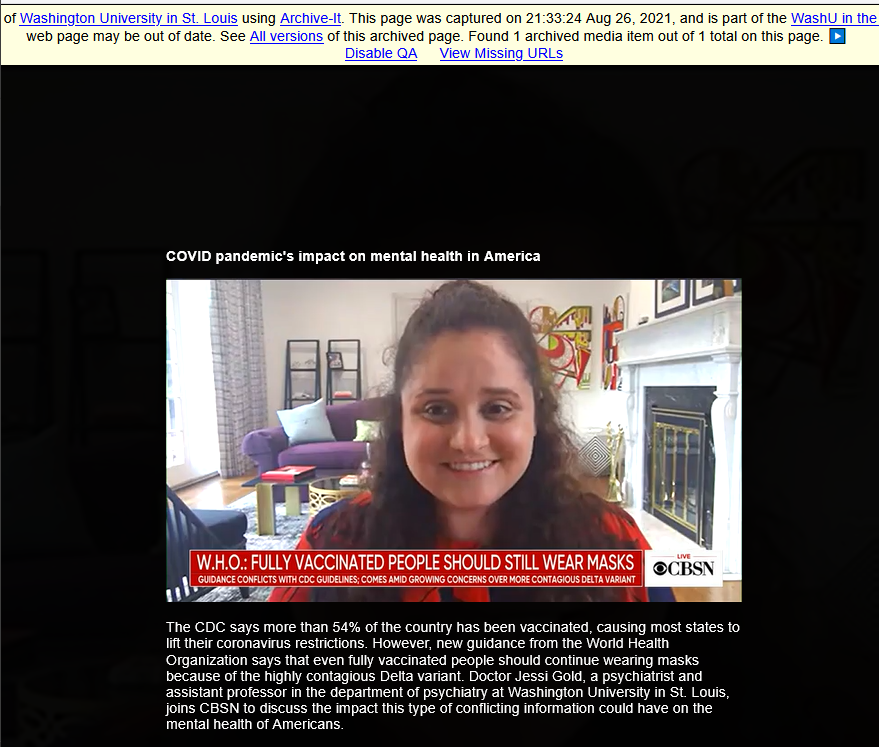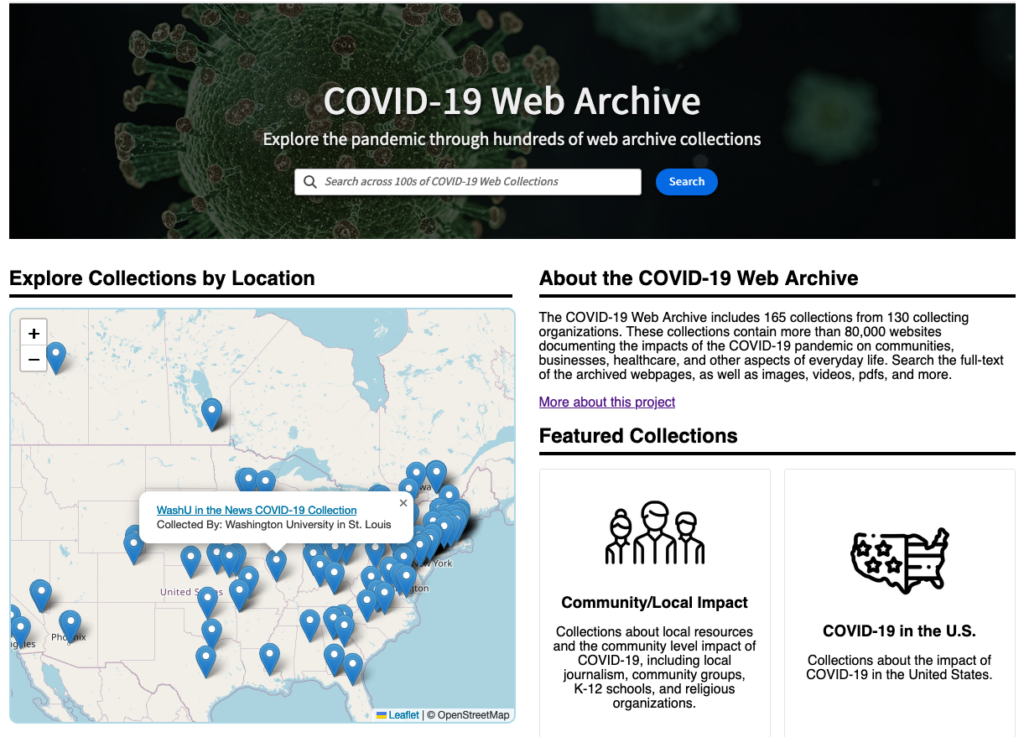
Digitally Archiving the Pandemic
The COVID-19 experience at Washington University was a watershed event that generated a trove of digital and physical materials. These include a web archive with the original digital presentation of articles, images, and other objects that can be used for research and learning by current and future scholars and students.
The University Libraries web archiving team—Robert Manley, Sarah Weeks, and Gail Walters—along with University Archivist Sonya Rooney, members of University Marketing & Communications, students, and faculty, have collaborated on assembling digital and physical materials that show what life was like at the university during the height of the epidemic.
Two and a half years in the making, the WashU in the News COVID-19 Collection, dating from March 2020 to the end of 2022, became available to researchers this spring. The collection, existing on Archive-It, a web archiving service from Internet Archive, contains COVID-19-related news articles featuring contributions from Washington University faculty, researchers, and staff. The university’s collection is part of a broader effort to archive the pandemic on the COVID-19 Web Archive through Archive-It, which currently includes 165 collections from 130 organizations.

The WashU in the News COVID-19 Collection showcases the immense scientific, medical, and policy contributions and news from the university pertaining to COVID-19 through a carefully curated collection of 1,300+ articles from a large variety of regional and national media. News featuring faculty, physicians, students, and staff pertain to critical issues that were thrown into sharp relief by COVID-19: vaccinations, healthcare policy, racism and equity, new COVID tests and medical discoveries, and economic and social transformations.
The collection is an important historical record of the role played by Washington University faculty and researchers during the pandemic. “What’s great about the collection is the way it shows how involved WashU was with different aspects of the pandemic. It provides a vivid picture of how our understanding, perspective, and experience of COVID-19 rapidly changed through time,” Manley said.

According to Weeks, the web archive represents a departure from the way scholarly collections have been assembled and used, paving the way for modern-day collection building and new possibilities of learning and research. “In the future, perhaps professors and scholars will be contributing their life’s work not in boxes but on a hard drive,” Weeks said. “The COVID-19 archive is a good example of the way the University Libraries are taking advantage of the new technology to archive, to preserve, and to provide access to the way people are producing information these days.”
Significant time and energy went into creating the collection. The efforts ranged from reviewing, filtering, and selecting each news article that would fit the collection to setting up and managing a web crawler to identify, capture, and preserve web articles, photos, and multimedia. “All the work that went into the project is important so that we were able to capture the relevant articles and so we can maintain them and make them available to researchers,” said Rooney.
The web archiving team is working towards building infrastructure and tools to enhance engagement, understanding, and contextualization of the collection for researchers. These include creating a finding aid and a tutorial (aka a LibGuide) for researchers, adding metadata and keywords, and other curatorial interventions that enhance the capabilities of the collection for research purposes.
“While the collection is publicly available, we need as archivists to support the efforts of researchers to use the content. As part of our rollout process, we are developing tools and building up support in anticipation of questions and concerns by users,” Manley said.
In addition, University Archives has collected other online, digital, and physical materials from 2020 onwards that center on the effects of the pandemic on campus (read Archiving the COVID-19 Experience). The materials include university publications, COVID-19-related emails from the Chancellor, Provost, and Student Affairs, videos of virtual Commencement Recognition Ceremonies, and much more. Students’ projects from a class, “Health and Disease in World History,” taught by Professors Corinna Treitel and Christina Ramos, gathered photos, conducted interviews, recorded memories, and assembled many other kinds of sources—some of which were given to University Archives. Rooney said, “The pandemic touched so many aspects of the university and University Archives collected snapshots of the impact, have preserved them, and are making them available to researchers today and in the future.”
For more information on these collections, please contact the University Archivist Sonya Rooney.
